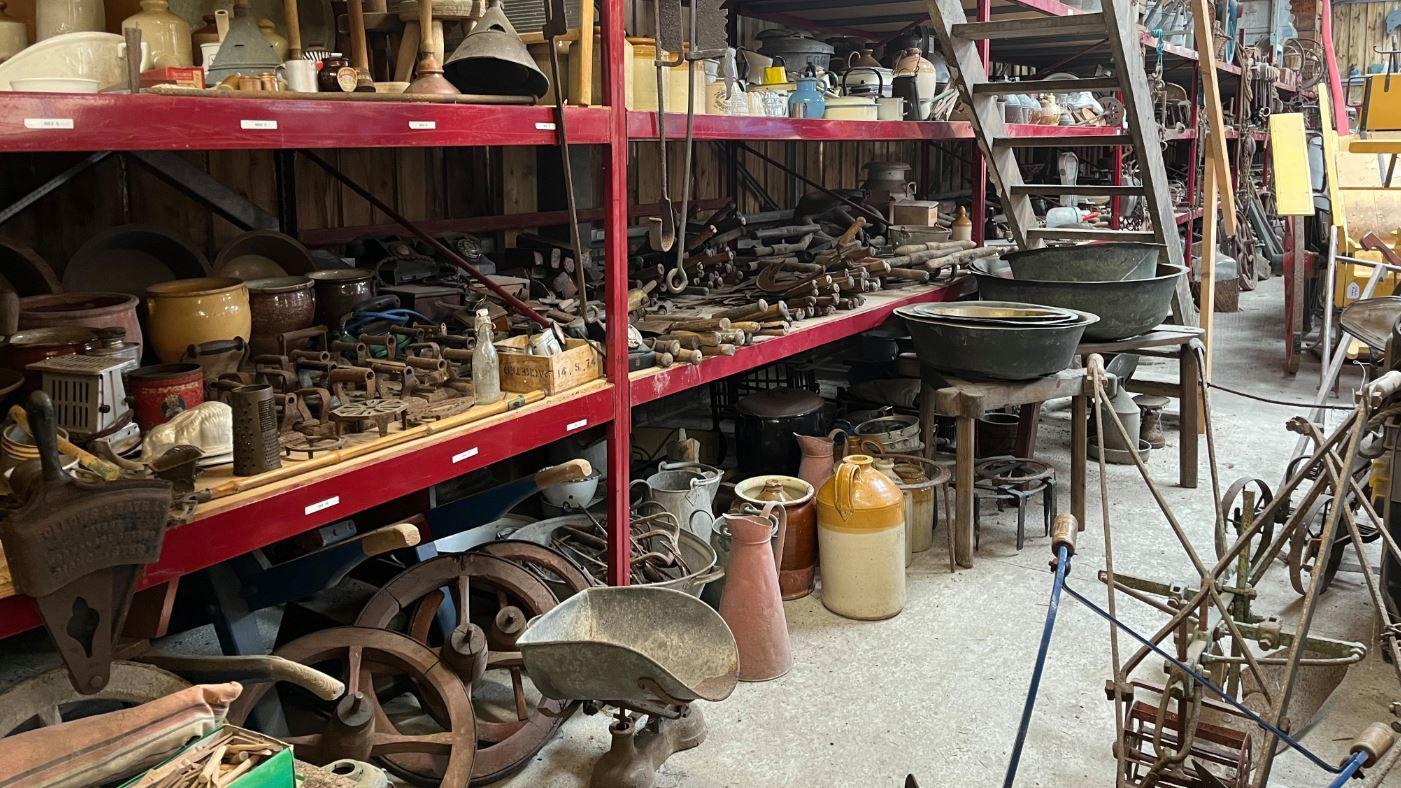
'I SAVE THINGS ON GUERNSEY FOR FUTURE GENERATIONS'
A collector of pieces of Guernsey’s agricultural heritage says he intends to preserve items he has gathered for another generation.
Saving such objects is something of a compulsion for Nic Jee.
What started off as an interest in anything to do with agriculture has branched out from there, with a collection now comprising of thousands - if not tens of thousands - of items.
He said: “I just don’t like to see things going on skips, so I tend to save things that I think might be interesting to future generations.”
A large barn on his farm holds just over half his collection.
While the majority of the items have no monetary value, Mr Jee said he considered them priceless.
He laughed as he explained: “I’m afraid I’ve got sheds full all over the place.
"It’s very difficult because, if I don’t save certain things, then nobody will. I can’t quite bring myself to let things get burnt, so I end up with them.”
The main floor of his barn is taken up with Guernsey vans, box carts and long carts.
He said: “The trouble with carts is they look quite pretty, so people fill them with soil and plant bulbs in them and put them in their front garden.
"That looks lovely for five years, perhaps, and then that’s the end of that, and that’s another bit of our heritage gone.
"How many long carts are left in Guernsey? There might be five, but that’s all I can think of. I own two of them.
"Box carts, there used to be hundreds of them around when I was a boy, but I couldn’t tell you if there were 10 in the island now.”
Mr Jee said he started collecting as a child and remembered going to farm auctions with his father in the 1970s.
The barn seems full at first glance, but everything is neatly stored, with two deep shelves running along the length of the back wall.
There is a farm implements section and a household section which includes at least 30 traditional Guernsey bashins (metal bowls) of differing sizes. Traditionally used for cooking over an open fire, they could also be used to bathe a baby.
There are lots of similar items to the untrained eye.
However, Mr Jee said: “They’re all slightly different – how would you decide which one not to keep and what would you do with it, you couldn’t put it on a skip because it’s hundreds of years old.”
There are traditional Guernsey milk cans of all sizes, from the largest used on farms to the very smallest tourist cans sold by the now-defunct shop Le Lievres.
There is a cobblers' section, a quarrying section. The collection is vast and eclectic.
There is also a selection of Guernsey-made bricks.
Mr Jee said: “There’s Bests, Gabriels, Helman. There’s some with WB on them, I’m not sure whether that was local or not, and JB.
"I sort of assume they’re local ones because they’re so poor. Imported bricks were much better quality than the locally-made ones.”
He added: “I love things that I don’t know what they are, they’re the most interesting things because finding out is the fun bit.”
While he is keen to preserve Guernsey’s heritage, he said he understood why others did not hold the same fascination.
“We can’t live in the past, but somebody has to keep the things that aren’t worth anything but are interesting,” he said.
Ultimately, he would like to share his collection with others.
Mr Jee said: “It would be lovely to think of it going somewhere, but, at the moment, people aren’t that interested.
"But I’ll preserve it for another generation, and then it will be my children’s problem I suppose.”
Follow BBC Guernsey on X (formerly Twitter) and Facebook. Send your story ideas to [email protected].
2024-06-16T06:40:23Z dg43tfdfdgfd